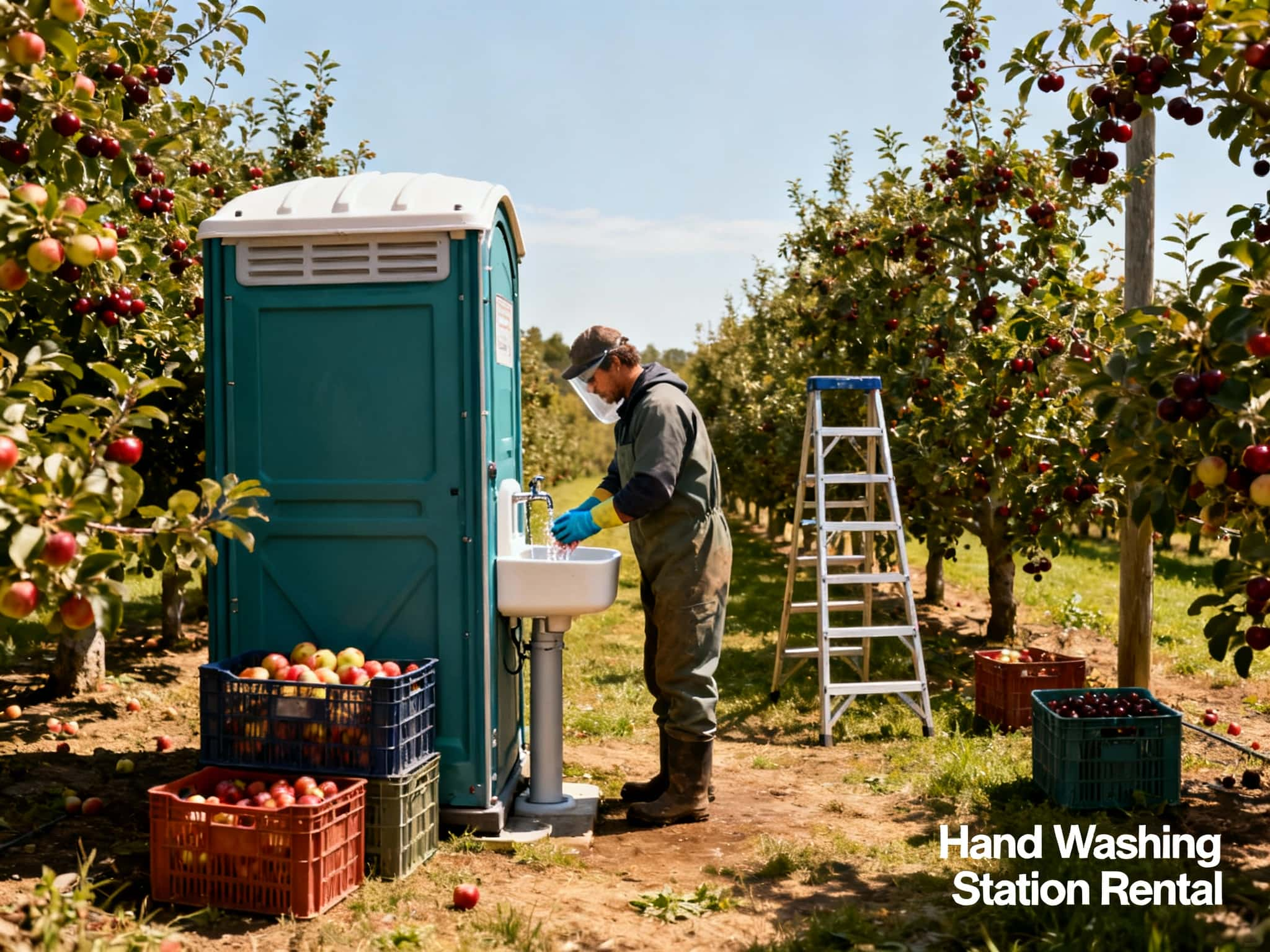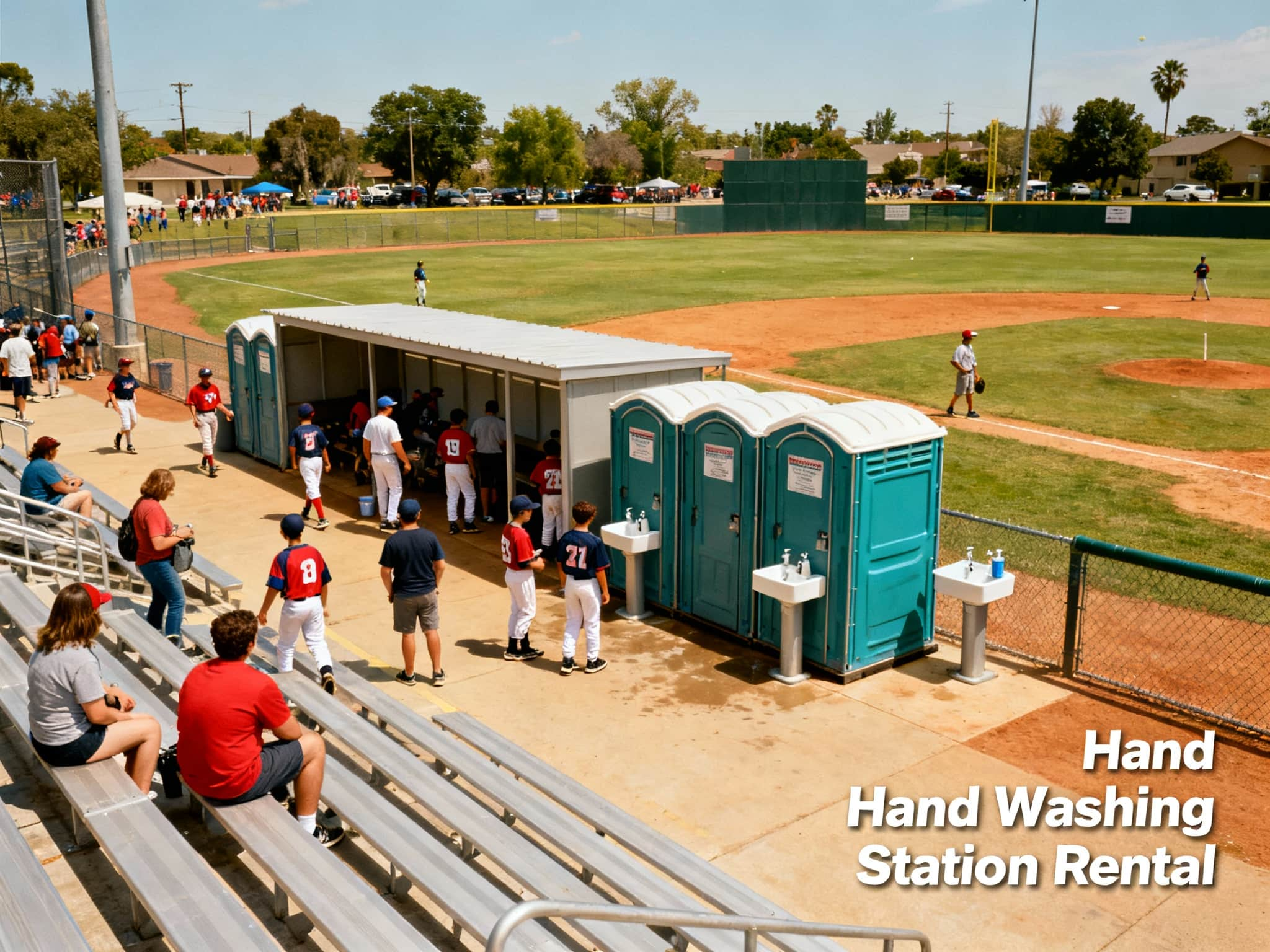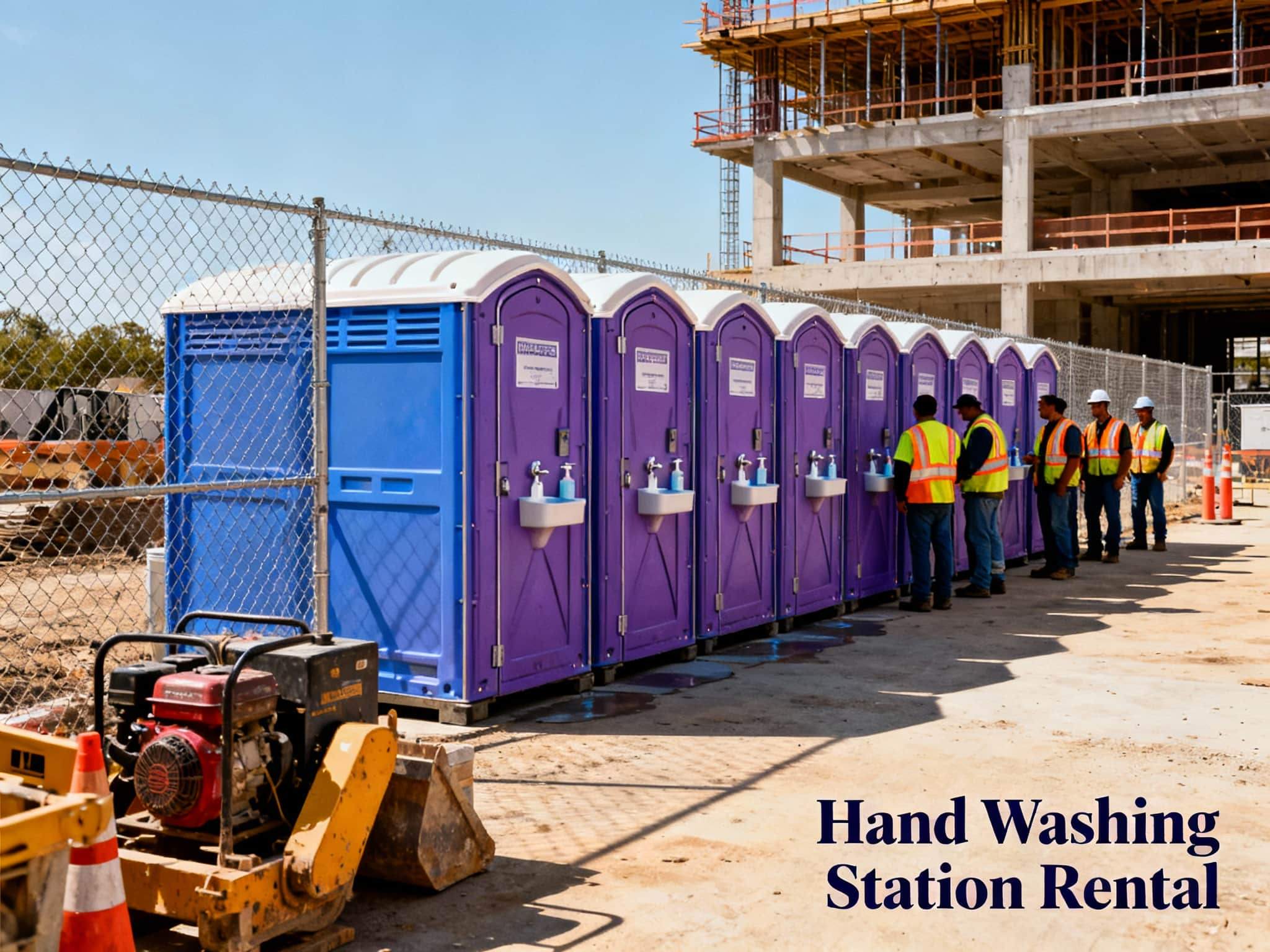Understanding Water Hookup Requirements for Portable Restrooms
Renting a portable restroom trailer is a great way to provide comfortable and convenient facilities for events, construction sites, or any location lacking permanent plumbing. But before you book that luxurious trailer, its important to understand the water hookup requirements. Its not as simple as just parking it and hoping for the best! Ensuring a proper water connection is crucial for the restrooms to function correctly and hygienically.
Think of it like this: these arent your basic porta-potties. Trailer restrooms often feature flushing toilets, running water sinks, and even showers in some models. All that requires a consistent water supply. Typically, the trailer will need to be connected to a standard water spigot, much like youd find in your backyard. Youll need to have access to such a spigot within a reasonable distance of where you plan to park the trailer.
The type of connection needed can vary depending on the trailer model, so its vital to discuss this with the rental company. Theyll be able to tell you the specific size and type of hose fitting required. Often, a standard garden hose connection will suffice, but larger trailers with multiple fixtures might require a more robust connection and higher water pressure.
Water pressure is another critical factor. Insufficient water pressure can lead to weak flushes, trickling faucets, and an overall unpleasant experience for users. The rental company can advise on the minimum water pressure needed for the trailer to function properly. If youre unsure about your water pressure, you can purchase a simple pressure gauge at most hardware stores to check it.
Finally, consider the water source itself. Is it potable (safe to drink)? While the water is primarily for flushing and handwashing, its best to ensure its clean. If youre using a well or other non-municipal water source, its worth testing the water quality to ensure it meets basic safety standards.
In short, understanding the water hookup requirements for your portable restroom trailer rental is essential for a smooth and successful experience. Communicate clearly with the rental company, assess your water source and pressure, and ensure you have the necessary connections. Doing your homework beforehand will prevent headaches and ensure your guests have a clean and comfortable restroom experience.
Types of Water Hookups for Trailer Restrooms
When it comes to renting portable restrooms for events, construction sites, or any location where traditional facilities are unavailable, understanding the types of water hookups available is crucial. These hookups ensure that the restrooms are functional, comfortable, and hygienic for users. Here's a breakdown of the common types of water hookups for trailer portable restrooms:
Direct Water Supply Hookup:
This is the most straightforward and efficient type of hookup. It involves connecting the portable restroom directly to a local water supply, such as a garden hose or a dedicated water line. This setup allows for continuous water flow, ensuring that the tank is always full and ready for use. It's ideal for long-term events or sites where consistent water availability is essential.
Tank Fill Hookup:
In situations where a direct water supply isn't feasible, a tank fill hookup can be used. This method involves filling the restroom's water tank manually using a hose. While this requires more effort and periodic attention to ensure the tank doesn't run dry, it's a versatile option for locations without easy access to a permanent water source.
Gravity Fed Water System:
Some portable restrooms are designed with a gravity-fed water system. This system uses elevated water tanks that feed water into the restroom via gravity, eliminating the need for pumps or direct hookups. It's a reliable option for areas with inconsistent water pressure or where electrical hookups are not available.
Self-Contained Water System:
For maximum flexibility, some portable restrooms come with a self-contained water system. These units have their own water storage and purification system, requiring no external hookups. They are perfect for remote locations or events where setting up water lines is impractical.
Pump Assisted Water Hookup:
In cases where the water source is below the level of the restroom or the water pressure is insufficient, a pump-assisted hookup can be used. This setup includes a pump that boosts the water pressure, ensuring a steady flow into the restroom's tank. It's particularly useful in varied terrains or when using lower pressure water sources.
Choosing the right type of water hookup depends on several factors, including the duration of the event, the location's infrastructure, and the specific needs of the users. By understanding these options, renters can ensure they select the most appropriate setup for their needs, providing a comfortable and hygienic experience for all users.
Essential Equipment and Materials for Water Hookups
Okay, so youre getting into the portable restroom rental business, specifically the kind that need a water hookup. That means youre not just dropping off a self-contained unit; youre providing a higher-end experience with flushing toilets and handwashing stations, and that requires a bit more planning. Essential equipment and materials for water hookups are the unsung heroes that make everything work smoothly and keep your customers happy (and compliant with hygiene regulations, lets not forget!).
First and foremost, youll need the right hoses. Forget your garden variety stuff – you need potable water hoses that are specifically designed for drinking water. These are usually white or blue and made from materials that wont leach harmful chemicals into the water supply. Length is crucial; you need to be prepared for varying distances between the water source and the restroom trailer. Having a good assortment of lengths on hand is a smart move.
Next up are fittings and connectors. This is where things can get a little tricky because water sources arent always standardized. Youll want a variety of adapters to connect to different types of spigots and faucets. Think about having quick-connect fittings for efficient setup and breakdown, as well as backflow preventers to protect the municipal water supply from contamination. Nobody wants to be responsible for a public health issue!
Then theres the pressure regulator. Water pressure can fluctuate wildly, and too much pressure can damage the restroom trailers plumbing. A regulator ensures a consistent and safe water flow. It's a relatively inexpensive piece of equipment that can save you a lot of headaches (and repair bills) in the long run.
Beyond the basics, consider the practicalities of the job site. You might need hose clamps to ensure tight connections and prevent leaks. A hose reel can make storage and deployment much easier, preventing tangles and extending the life of your hoses. And dont forget about tools: a wrench, pliers, and maybe even a pipe cutter can be invaluable for making adjustments and repairs on the spot.

Finally, a good dose of common sense and preparedness goes a long way. Pack a repair kit with extra washers, tape, and small parts. Always inspect your equipment before and after each rental to identify any potential problems. And, most importantly, understand the local regulations regarding water connections and backflow prevention.
In short, providing water hookups for portable restrooms involves more than just a hose. Its about having the right equipment, the right knowledge, and a commitment to providing a safe and reliable service. By investing in quality materials and planning ahead, you can ensure a smooth and successful rental experience for both you and your customers.
Step-by-Step Guide to Connecting Water to a Trailer Restroom
Sure, heres a step-by-step guide to connecting water to a trailer restroom for those renting portable restroom services:
First, gather all necessary materials. Youll need a water supply line, appropriate fittings, a drill, a level, and a wrench. Make sure you have easy access to a water source nearby.
Begin by positioning the trailer restroom where you want it. Use the level to ensure its stable and wont tip over. This is crucial for both safety and the proper functioning of the water system.
Next, locate the water inlet on the trailer restroom. Its usually found at the back or side of the unit. Clean the area around the inlet to ensure a secure connection later on.
Drill a small hole through the trailer wall near the water inlet if one isnt already present. Photo records for portable restroom rentals . This will allow you to feed the water supply line through the wall and into the restroom.
Thread the water supply line through the hole you just drilled. Make sure its long enough to reach from the water source to the inlet without being overly taut or slack.

Connect one end of the water supply line to the water source using the appropriate fittings. This could be a garden hose connection, a dedicated outdoor faucet, or another type of water outlet. Ensure the connection is tight to prevent leaks.
Attach the other end of the water supply line to the water inlet on the trailer restroom. Again, use the appropriate fittings and tighten securely. Double-check all connections to ensure there are no leaks.
Turn on the water supply and check for any leaks around the connections. If you notice any leaks, tighten the fittings or adjust the connections as needed until the leak stops.
Once everything is secure and leak-free, youre ready to use the trailer restroom with running water. Remember to turn off the water supply when the restroom isnt in use to conserve water and prevent any potential issues.
By following these steps, you can successfully connect water to a trailer restroom, providing a convenient and hygienic solution for portable restroom rentals.
Troubleshooting Common Water Hookup Issues
Water hookups for trailer portable restrooms can seem straightforward, but even something as simple as connecting a hose can sometimes throw a wrench into your plans. Nobody wants a situation where restrooms are out of service because of a leaky connection or a lack of water pressure. Luckily, most common water hookup issues are easily resolved with a little know-how and a systematic approach to troubleshooting.
One of the most frequent problems is simply a loose connection. Often, this results in a slow drip or a steady leak around the hose bib or the connection to the restroom trailer itself. The fix is usually as simple as tightening the connections, ensuring the hose is properly seated on the bib, and making sure any rubber washers or gaskets are in good condition and properly placed. Sometimes, a little pipe dope or Teflon tape on the threads can provide a better seal.
Another common culprit is inadequate water pressure. If the restroom trailer isnt getting enough water, the toilets might not flush properly, or the sinks might only dribble. Before assuming theres a problem with the trailer, check the water source first. Is the water turned on fully at the main valve? Is the source providing sufficient pressure? Sometimes, older plumbing systems can have low pressure, especially during peak usage times. In these cases, you might need to consider a booster pump to increase the pressure.
Hose kinks and obstructions are another thing to watch out for. A kinked hose can severely restrict water flow, and debris inside the hose can clog the system. Straighten out any kinks and inspect the hose for blockages. Flushing the hose out before connecting it to the trailer can help remove any loose particles.
Finally, compatibility issues can arise. Not all hoses and fittings are created equal. Make sure youre using the correct type of hose and fittings for the job. Using mismatched sizes or materials can lead to leaks and other problems. Check the specifications of your restroom trailer and ensure the water source and hose are compatible.
By addressing these common issues methodically, you can usually resolve most water hookup problems and keep your portable restroom trailer running smoothly. A little preventative maintenance and a basic understanding of plumbing connections can go a long way in ensuring a positive experience for your renters.
Maintaining Water Hookups for Optimal Performance
Maintaining water hookups for optimal performance is crucial when it comes to trailer portable restroom rentals. These units are designed to provide convenience and comfort, especially in outdoor events, construction sites, or any location where permanent restroom facilities are not available. Ensuring that the water hookups are in top condition not only enhances the user experience but also prolongs the lifespan of the equipment.
Firstly, regular inspection of the water hookup system is essential. This includes checking for any visible leaks, cracks, or signs of wear and tear in the hoses, fittings, and connections. Even small leaks can lead to significant water wastage and potential damage to the surrounding area. Its advisable to conduct these inspections before and after each rental period to catch any issues early.
Secondly, using high-quality materials for the water hookup system can make a substantial difference. Investing in durable hoses, corrosion-resistant fittings, and reliable valves can prevent many common problems associated with water hookups. Additionally, ensuring that all connections are tight and secure can help maintain a consistent water flow and prevent leaks.
Thirdly, proper maintenance of the water storage tank is vital. The tank should be regularly cleaned to prevent the buildup of algae, bacteria, and other contaminants. This not only ensures a clean water supply but also helps in maintaining the overall hygiene of the portable restroom. Using appropriate cleaning agents and following manufacturer guidelines for tank maintenance can significantly enhance performance.
Furthermore, educating users on the proper use of the water hookup system can contribute to its longevity. Simple practices such as not overtightening connections, avoiding sharp bends in hoses, and ensuring that the unit is level when in use can prevent unnecessary stress on the system.
In conclusion, maintaining water hookups for optimal performance in trailer portable restroom rentals involves regular inspections, using high-quality materials, proper tank maintenance, and user education. By adhering to these practices, rental companies can ensure a reliable and hygienic service, enhancing user satisfaction and reducing the need for frequent repairs.
Regulations and Best Practices for Water Hookups
When it comes to renting portable restrooms for events, construction sites, or any other temporary setups, ensuring proper water hookups is crucial. Not only does it enhance user comfort, but it also plays a significant role in maintaining hygiene standards. To achieve this, its essential to adhere to regulations and best practices for water hookups.
First and foremost, understanding local regulations is paramount. Different regions may have specific guidelines regarding water hookups for portable restrooms. These regulations often cover aspects such as water pressure, connection types, and safety measures. Its imperative for rental companies to familiarize themselves with these regulations to ensure compliance and avoid potential legal issues.
In addition to regulatory compliance, implementing best practices for water hookups is essential for optimal performance and user satisfaction. One key practice is conducting thorough inspections of both the portable restroom unit and the water hookup system before deployment. This includes checking for leaks, ensuring proper connections, and verifying that water pressure meets the required standards.
Furthermore, utilizing high-quality materials and equipment is crucial for reliable water hookups. Investing in durable hoses, fittings, and connectors can help prevent leaks and ensure a consistent water supply. Regular maintenance and inspection of these components are also necessary to identify and address any issues promptly.
Another important aspect of best practices is providing clear instructions and guidelines to clients regarding water hookups. This may include information on how to connect the portable restroom to the water supply, recommended water pressure levels, and troubleshooting tips for common issues. Educating clients on proper usage not only enhances their experience but also helps prevent damage to the equipment.
Moreover, implementing safety measures is essential to protect both users and equipment. This may involve installing shut-off valves to prevent water overflow, using backflow preventers to safeguard against contamination, and ensuring that all connections are secure and leak-free.
In conclusion, regulations and best practices for water hookups play a vital role in ensuring the functionality, safety, and hygiene of portable restroom rentals. By adhering to local regulations, implementing best practices, utilizing high-quality materials, providing clear instructions, and prioritizing safety measures, rental companies can deliver a reliable and satisfactory experience for their clients.